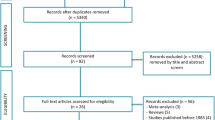Abstract
Purpose
The treatment of high anal fistula using endorectal advancement flaps represents an important technique to attain cure of fistulation and preserve anal continence. The creation of the advancement flap may comprise the rectal mucosa only or involve the full transection of the rectal wall. A comparison between full-thickness flaps and mucosal (partial-thickness) flaps was made to analyze the defining elements of successful fistula treatment: recurrence rates and anal continence.
Methods
A retrospective review of 54 consecutive patients with high anal fistula of cryptoglandular origin was undertaken. Patient risk was categorized according to previous anal surgery. Continence was assessed according to the Vaizey score. Recurrence rates were recorded in a long-term, complete follow-up.
Results
Thirty-four patients underwent surgery using a partial-thickness flap; in 20 patients the full-thickness flap was used. There were no major intraoperative or postoperative complications. Continence scores revealed significant incontinence in 11.1 percent of all patients. Full transection of the rectal wall for flap creation did not pose a threat to continence. Twenty-four percent of all patients suffered from a recurrence. Patients with four or more previous anal surgeries were at highest risk for failure. A single patient in the full-thickness flap group (5 percent) as opposed to 12 patients (35.3 percent) in the partial-thickness group suffered from recurrence.
Conclusion
The comparison of partial-thickness to full-thickness endorectal advancement flaps suggests an improvement of recurrence rates without higher incontinence rates when a full mobilization of the rectal wall is performed.
Similar content being viewed by others
References
Arderne J. Treatises of fistula in ano, haemorroids and clysters. D. Power, 1910.
Noble G. A new operation for complete laceration of the perineum designed for the purpose of eliminating danger of infection from the rectum. Trans Am Gynecol Soc 1902;27:357–63.
Elting A. The treatment of fistula-in-ano, with especial reference to the Whitehead operation. Ann Surg 1912;56:744–52.
Laird D. Procedures used in treatment of complicated fistulas. Am J Surg 1948;76:701–8.
Jorge JM, Wexner SD. Etiology and management of fecal incontinence. Dis Colon Rectum 1993;36:77–97.
Vaizey CJ, Carapeti E, Cahill JA, Kamm MA. Prospective comparison of fecal incontinence grading systems. Gut 1999;44:77–80.
Sonoda T, Hull T, Piedmonte MR, Fazio VW. Outcomes of primary repair of anorectal and rectovaginal fistulas using the endorectal advancement flap. Dis Colon Rectum 2002;45:1622–8.
Mizrahi N, Wexner SD, Zmora O, et al. Endorectal advancement flap: are there predictors of failure? Dis Colon Rectum 2002;45:1616–21.
Fazio VW. Complex anal fistulae. Gastroenterol Clin North Am 1987;16:93–114.
Dixon M, Root J, Grant S, Stamos MJ. Endorectal flap advancement repair is an effective treatment for selected patients with anorectal fistulas. Am Surg 2004;70:925–7.
Ortiz H, Marzo J. Endorectal flap advancement repair and fistulectomy for high trans-sphincteric and suprasphincteric fistulas. Br J Surg 2000;87:1680–3.
Lechner P. The mucosal sliding flap in the treatment of supra and high trans-sphincteric anal fistula [in German]. Chirurg 1991;62:891–4.
Willis S, Rau M, Schumpelick V. Surgical treatment of high anorectal and rectovaginal fistulas with the use of transanal endorectal advancement flaps [in German]. Chirurg 2000;71:836–40.
Hyman N. Endoanal advancement flap repair for complex anorectal fistulas. Am J Surg 1999;178:337–40.
Marchesa P, Hull TL, Fazio VW. Advancement sleeve flaps for treatment of severe perianal Crohn’s disease. Br J Surg 1998;85:1695–8.
Author information
Authors and Affiliations
Corresponding author
About this article
Cite this article
Dubsky, P.C., Stift, A., Friedl, J. et al. Endorectal Advancement Flaps in the Treatment of High Anal Fistula of Cryptoglandular Origin: Full-Thickness vs. Mucosal-Rectum Flaps. Dis Colon Rectum 51, 852–857 (2008). https://doi.org/10.1007/s10350-008-9242-3
Received:
Revised:
Accepted:
Published:
Issue Date:
DOI: https://doi.org/10.1007/s10350-008-9242-3




